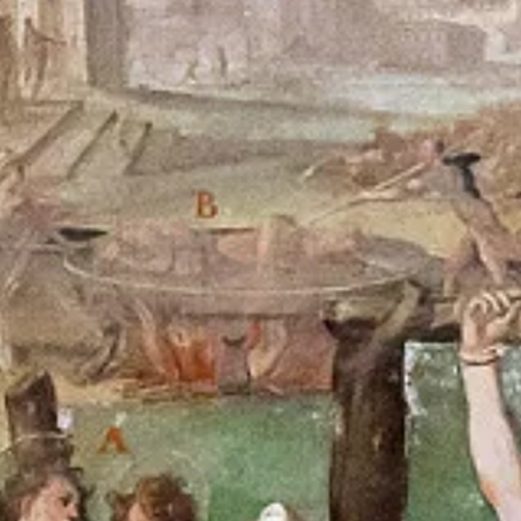If you take the central image of St Marius as your starting point for this fresco, you might feel that it’s one of the less challenging images in the series.
In fact, I have to wonder whether Circignani was going slightly for the objectification of the silver fox here?? He’s stretched out for the viewer, arms up to flatten the tummy and raise the chest, a low slung loin cloth that leads to some magnificently muscular legs AND he has his head down meaning that he can’t meet our gaze, hence we are free to feast on his torso. Okay, I know that he’s somewhat obliged to be in this position because he’s tied to a wooden frame, but that also acts as a pictorial frame. It’s as though this image of St Marius is a picture within a picture or a scene within a scene.

N. Circignani and M. da Siena, The Martyrdom of Saint Marius, Martha, Audifax and Abacum, Santo Stefano Rotondo, fresco 19, 1581-2
To Marius’s right are his sons, Audifax and Abacum. They are gorgeous youths who look as though they were just walking down the path, when one stopped to say something to the other and all of a sudden a guy with two huge metal hooks accidentally got them stuck in their flesh. The boy on the right is looking down with some curiosity, as well he might, and the guy with the hooks has the air of a man who’s having a fabulous time perhaps shaking maracas in an overzealous dance rather than someone in the middle of committing an act of murder. Again, it’s rather incongruous, especially as there’s rather a lot of blood dripping down their bodies and pooling at their feet and it’s only on close examination that you realise that they are tied to a tree stump.


To Marius’s left is his wife, Martha. She looks like a lovely lady, dressed very decorously in a robe that would have been the height of fashion in ancient Rome. I’m not sure about her necklace or stole, however, I feel it’s in slightly poor taste?
Perhaps she knows this because she does seem to be looking down slightly shame faced. Maybe that’s because her hands are unfeasibly large, maybe it’s because they are indeed draped around her neck like mittens. If we missed that because her hands aren’t large enough, the livid red stumps trickling blood onto her lovely attire are another give away that something’s awry.
I don’t know what was going on in Circignani’s head when he designed this fresco, and I’m wondering whether the toll of all the previous gore had had an effect on him (this is fresco 19). Although we are told that this is Marius, his wife, Martha, and their two sons via the handy (sorry!) reference system, there’s no mention of big hooks and gruesome neck attire anywhere in the story of their martyrdom.
According to tradition, they travelled as a family from Persia to Rome and were arrested for burying martyred Christians, some of whom you can see piled up in the background as is customary in these frescoes. They were brought before a magistrate who told them that they would be released if they renounced their faith but they, I imagine very politely because they look like a polite family, said no thank you.
In the story Marius and his sons were beheaded on the Via Cornelia and their bodies were burned. Martha was murdered thirteen miles outside of Rome. Maybe she managed to run in her dress more successfully than the chaps could in their loin cloths?
Just when you thought there were no further gory scenes, we have St Valentine being beheaded over on the right, seen more clearly in a detail from an engraving of the fresco held in the British Museum.


There is also a couple in cauldron of boiling water on the left. One of them is St Justina who had the misfortune of being pretty and having a pagan nobleman fall in love with her. When it became obvious that she really wasn’t interested, he did what anyone would do in that situation and employed a magician called Cyprian to cast a spell over her to make her love him in return. The plot thickens when Cyprian saw her and decided that, actually, it might be rather nice to have her for himself. So he tried to woo her by filling her head (with the help of the devil) with all sorts of dark, decadent, lustful fantasies and visions but she was having none of it. To his credit, Cyprian realised at this point that God was wielding more power than the devil and he decided on the strength of this to get baptised. After his baptism, he’s also persecuted as a Christian along with Justina; it’s him in that cauldron with her. I don’t know whether the pagan nobleman who employed him in the first place had anything to do with their predicament but if he did, he must have been peeved because they survived (note to Roman persecutors of Christians, they all survive the boiling water – remember Cecilia?) and were beheaded under the orders of Emperor Diocletian.


The video of this episode can be viewed here. To view the entire ‘Elevenses with Lynne’ archive, head to the Free Art Videos page.
